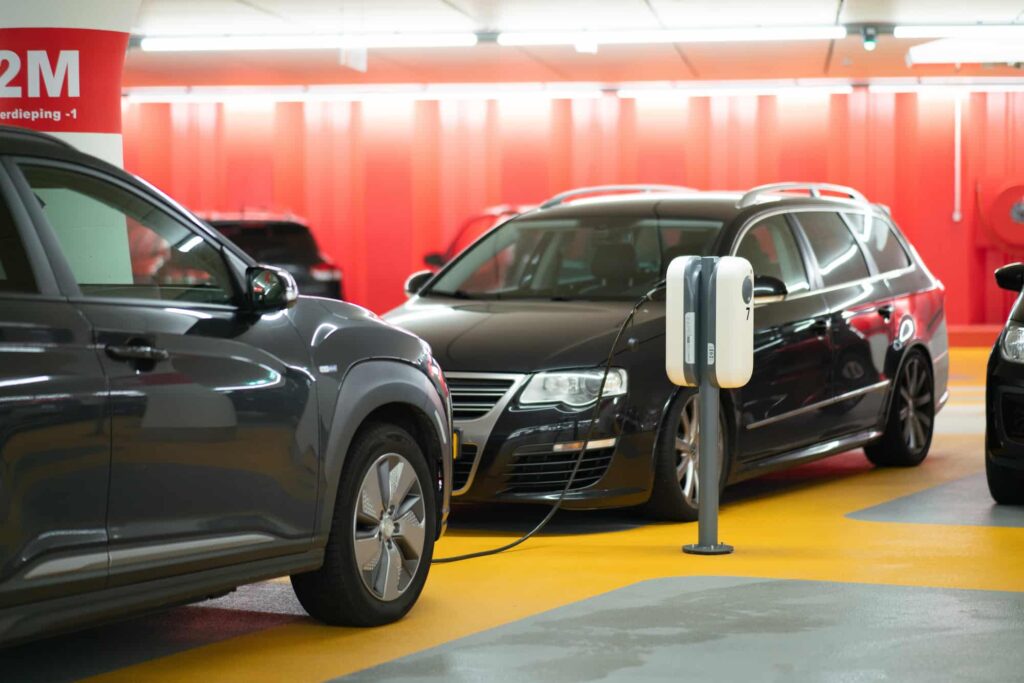There’s no escaping the technological advances in cars, which are gaining speed as time passes. In recent years, one of the main focuses has been reducing carbon emissions for the planet, which has taken up many manufacturers’ time.
The answer found? Hybrid and electric cars. Ecological solutions that, despite everything, don’t seem to be the last. The truth is that hybrid vehicles reduce fuel costs and are also more environmentally friendly than conventional vehicles.
But do they work the same? Find out all about how these “futuristic” cars.

Hybrid cars: what they are, which ones exist, and how they work
No, nobody invented gunpowder when hybrids hit the market. But there are innovations you should know about if you’re interested in this type of car. The main change is undoubtedly in the components — which influence these vehicles’ entire operation. Hybrid cars have 2 engines:
- An electric motor
- A combustion one
Thanks to the electric motor, these cars guarantee more efficient driving. But, in addition to these, there’s another type of hybrid: the plug-in ones, which work differently.
The electric motor in conventional hybrids isn’t rechargeable. Despite that, the battery uses the energy the combustion engine creates during driving to charge. For this reason, they’re more suitable for city driving.
In fact, these batteries help on shorter journeys of less than 50 km — an excellent solution for the constant city start and stop or even highway traffic. Not only is the battery optimized for these cases, but it’s also emitting less CO₂ into the atmosphere.
Hybrid cars vs. Plug-in hybrids: the main differences
Like hybrid cars, plug-in hybrids have 2 engines: one electric and the other combustion. But what sets them apart? The big difference is in the range and the batteries.
Hybrids have a range of around 50 km in electric mode. Plug-in hybrids, on the other hand, have a range of up to 75 km.
The batteries in plug-in hybrids are bigger and heavier, making the cars heavier — 200 to 300 kg more than conventional hybrids; hence, they travel a longer distance in electric mode than hybrid cars.
But the way they charge is also different.
While hybrids charge on the move, plug-in hybrids don’t. In these cases, you must use a charging station or a power grid to charge the battery.
Find out now how hybrids and plug-in hybrids are divided.
Mild hybrid cars (MHEV)
These vehicles are very similar to conventional hybrids. However, their electric motor only works at less than 25 km per hour. If you drive at a higher speed, the combustion engine takes over.
Conventional hybrid cars (HEV)
In these vehicles, the batteries are charged by regenerating dissipated energy and the combustion engine’s normal functioning.
Plug-in hybrid cars (PHEV)
In this case, you must go to a charging station or use the closest electricity grid to charge the batteries.

What are the pros and cons of hybrid cars?
Hybrid cars are very efficient, but they also have their drawbacks. Let’s start with the strongest points.
4 advantages of hybrid cars
- Tax incentives: granted by law, with a 40% tax reduction for vehicles with a minimum electric range of 50 km.
- Quieter vehicles: the electric motor doesn’t emit the sound that combustion engines do. They’re much quieter — which often makes driving more pleasant.
- Automatic charging: there’s no need to plug the vehicle into the mains to charge the electric motor. This saves you time and money.
- More power: the electric motor guarantees the instant power you need, not requiring that effort from the combustion engine — which can use diesel or gasoline.
But there are no advantages without disadvantages.
4 disadvantages of hybrid cars
- Heavier cars: as they have 2 engines, they’re heavier vehicles than conventional ones — which influences battery consumption, as you need more energy to move the car.
- More expensive: the level of technology used influences the final value of the car. These end up being more expensive than conventional cars.
- They’re hybrids, not 100% electrics: which can be a disadvantage. Why? Because you always end up spending (more) money fueling the combustion engine — which in turn causes high CO₂ emissions.
- They’re not suitable for everyone: don’t forget that the electric motor in hybrid cars has a range of 50 km. If you want more range — for longer journeys — this won’t be your best option.
The differences between hybrid, electric, and combustion cars
Let’s take a quick look at how each type of car works.
- Combustion cars: the car moves by burning fossil fuels. The energy produced by combustion is released into the atmosphere through CO₂.
- Electric cars: the energy is generated by a battery. The alternating current that drives the electric motor makes the car move. There’s no combustion engine.
- Hybrid cars: cars with 2 engines, one electric and one combustion.
But the differences don’t stop there. There are more aspects to consider:
- The way you fill up distinguishes electric cars from combustion cars. In just 5 minutes, you can completely fill up the tank of a combustion vehicle — which doesn’t happen with an electric one.
- The mechanics of an electric car are simpler than combustion car’s, as they use fewer components.
- A simpler mechanical system also leads to less maintenance. Electric cars don’t have particulate filters, gas recirculation, or injectors, among other components.
- So far, combustion cars have guaranteed more autonomy on the road than the others.
Now that you know how hybrid cars work and understand their differences, as well as their strengths and weaknesses, you can make a better decision. If you’re thinking of buying a car, take all this into consideration. And don’t forget the routes you usually take.
Have a good trip!

